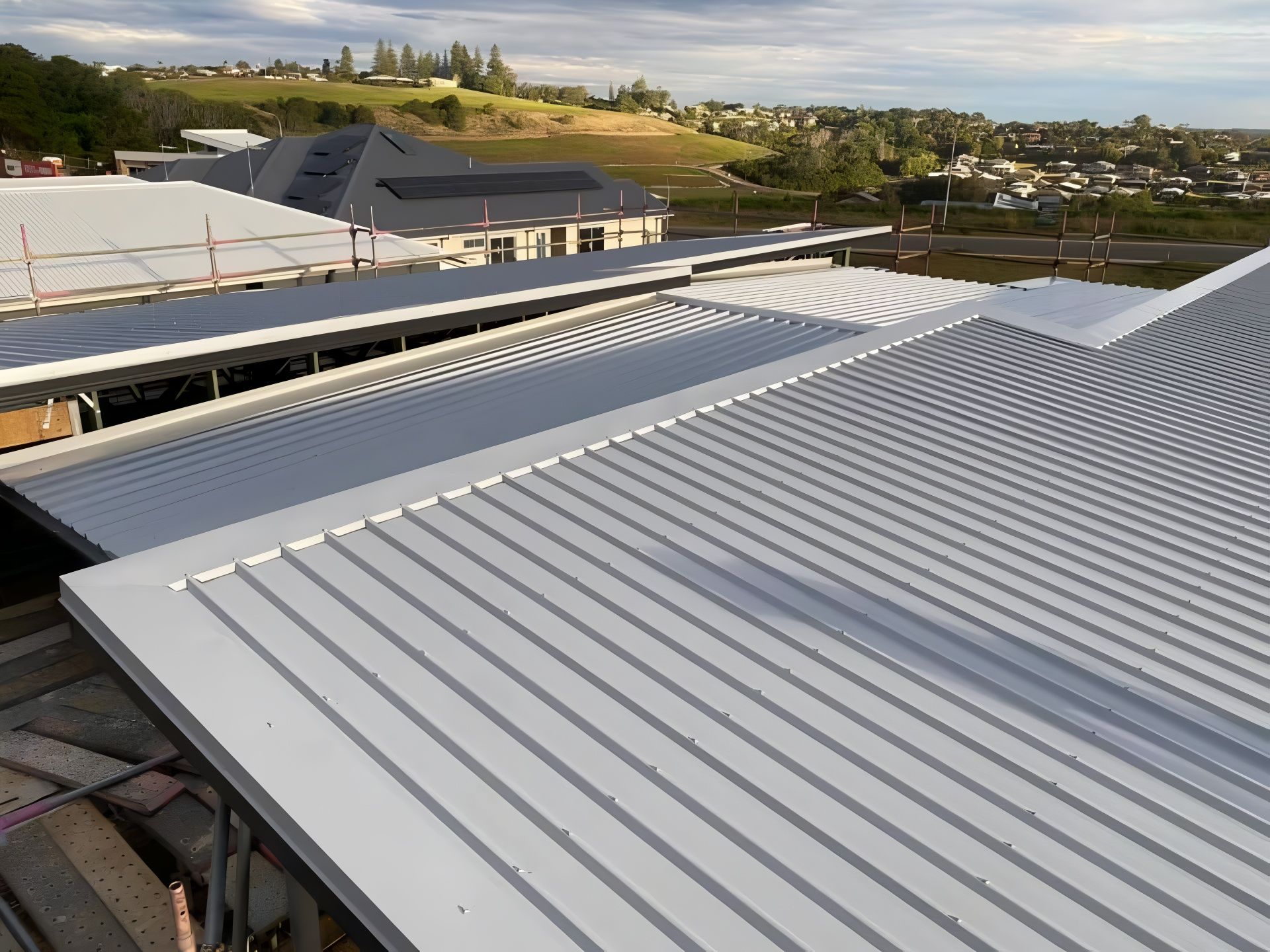Behind the Scenes: Testing Metal Roof Panels for Quality & Durability
Table of Contents
- How Climate-Specific Testing Ensures Metal Roofs Stand Up to Harsh Weather
- The Role of Salt Spray Testing in Preventing Coastal Corrosion
- Why Impact Testing Matters in Areas Prone to Storm Damage
- Assessing Fastener Security During Wind Uplift Testing
- Fire Resistance Testing: Meeting Australian Safety Standards
- The Importance of Coating Adhesion & UV Resistance
- What Quality Testing Means for Long-Term Home Value
- Book Your Metal Roofing Installation in the Northern Rivers Today
Choosing the right roofing material isn’t just about aesthetics but durability, weather resistance, and peace of mind. Nowhere is this truer than in the Northern Rivers, where the climate brings intense rain, gusty winds, and coastal humidity that can quickly wear down inferior materials. Metal roofing has become a trusted choice across the region, but what gives homeowners confidence is knowing those panels have been put through rigorous testing long before they reach the rooftop.
From salt spray chambers to high-impact simulations, each panel undergoes a series of quality assessments that mimic real-world challenges. These tests aren’t just technical exercises—they’re assurance that your roof will stand strong when it matters most. Let’s pull back the curtain and explore how metal roofing products are tested for performance and endurance.
How Climate-Specific Testing Ensures Metal Roofs Stand Up to Harsh Weather
Every environment presents unique roofing challenges, especially when extreme weather conditions are involved. That’s why manufacturers conduct climate-specific testing to confirm a roofing system’s resilience before installation.
Simulated climate tests expose metal panels to environmental stressors such as moisture, fluctuating temperatures, and rapid water accumulation to evaluate performance and durability.
- Panels are placed in humidity-controlled chambers to assess corrosion and moisture resistance.
- Intense rainfall is replicated using pressure sprays to test water drainage and sealing effectiveness.
- Temperature cycling mimics seasonal shifts to monitor expansion, contraction, and potential material fatigue.
These rigorous evaluations ensure that metal roofing remains stable, rust-resistant, and watertight across various climatic conditions.
The Role of Salt Spray Testing in Preventing Coastal Corrosion
Living near the coast offers incredible views, but salt in the air can be brutal on metal surfaces. That’s why coastal suitability is a crucial testing area for metal roofing in the Northern Rivers.
Salt spray testing accelerates corrosion in a controlled environment, allowing manufacturers to measure how long coatings and base metals can withstand exposure before deteriorating.
- Panels are exposed to a saline mist for days or weeks to simulate years of coastal exposure.
- Observations focus on blistering, pitting, and flaking—early signs of corrosion.
- Test results help determine the right combination of alloy type, galvanising layer, and protective coating.
The outcome is a roof that holds up in salty coastal air without sacrificing integrity or aesthetics.
Why Impact Testing Matters in Areas Prone to Storm Damage
Storms often forcefully bring hail, flying debris, and high-speed winds. Impact testing prepares metal roof panels for these intense events.
This test measures the resistance of the roofing material to physical damage. Panels must maintain structural integrity even after being struck with high-velocity objects.
- Simulated hailstones or steel balls are dropped onto panels from a controlled height.
- The surface is checked for dents, punctures, or compromised coating layers.
- Testing is repeated after UV and humidity exposure to reflect real-world wear.
Homeowners benefit from knowing their roof won’t give way under sudden, forceful impact.
Assessing Fastener Security During Wind Uplift Testing
A metal roof is only as strong as its connections. In high-wind regions, every panel must stay firmly anchored. Wind uplift testing ensures fasteners can resist the suction effect of stormy weather.
This test checks how securely panels remain fixed when subjected to negative air pressure from underneath.
- Air is blasted at installed roofing sections to replicate real-world wind speeds.
- Monitoring devices record when or if fasteners begin to move or disengage.
- Different fastener types and spacing patterns are trialled to determine the most secure combinations.
These results inform roofing system design, helping installers use attachment methods proven to withstand extreme winds.
Fire Resistance Testing: Meeting Australian Safety Standards
Fire is a serious concern for any home, particularly in regions susceptible to lightning strikes or exposure to surrounding vegetation. That’s why fire resistance testing is a mandatory requirement for roofing systems across Australia.
Panels are subjected to controlled flame, heat, and ember exposure to assess their reaction to fire events.
- Panels are evaluated on ignition speed, flame spread, and the generation of smoke or toxic fumes.
- Performance is compared against the Australian Standard for fire-resistant construction.
- Roofing systems must also be evaluated for how embers might collect in overlaps or gaps.
A high-performing metal roof offers homeowners greater security in the face of fire risks.
The Importance of Coating Adhesion & UV Resistance
Metal roofing often features a painted or coated finish to improve longevity and visual appeal. However, constant sun exposure can cause fading, chalking, or peeling if the coating isn’t properly tested.
Adhesion and UV resistance tests ensure surface treatments remain intact and effective for years.
- Paint layers are tested with tape-pull adhesion methods to measure bonding strength.
- UV chambers expose panels to artificial sunlight to simulate years of exposure.
- Surfaces are analysed for chalkiness, colour fade, and resistance to cracking or blistering.
This guarantees a roof that looks sharp and performs well under the sun’s harsh rays.
What Quality Testing Means for Long-Term Home Value
Investing in a tested and certified roofing product means more than fewer maintenance issues—it’s a long-term boost to your property’s durability and sustainability.
A well-tested metal roof in the Northern Rivers offers better resale appeal, reduced insurance concerns, and increased homeowner confidence.
- Withstands harsh regional conditions with fewer repairs or replacements.
- Maintains its visual appearance over decades of UV and salt exposure.
- Protects structural elements of the home from water ingress and thermal stress.
For homeowners, it’s an investment that delivers long-term durability, reduced maintenance, and reliable performance.
Book Your Metal Roofing Installation in the Northern Rivers Today
At Northern Rivers Metal Roofing, we understand the local climate and the pressures it puts on your roofing. That’s why our metal roofing systems in the Northern Rivers are thoroughly tested for everything from storm resistance to corrosion control. Every panel we install is backed by strict quality standards that ensure long-lasting performance across the Northern Rivers region. Visit our website to learn more or get in touch via our contact page to schedule a consultation. Let our metal roofing contractors secure your home with a roof that’s built for our environment.








